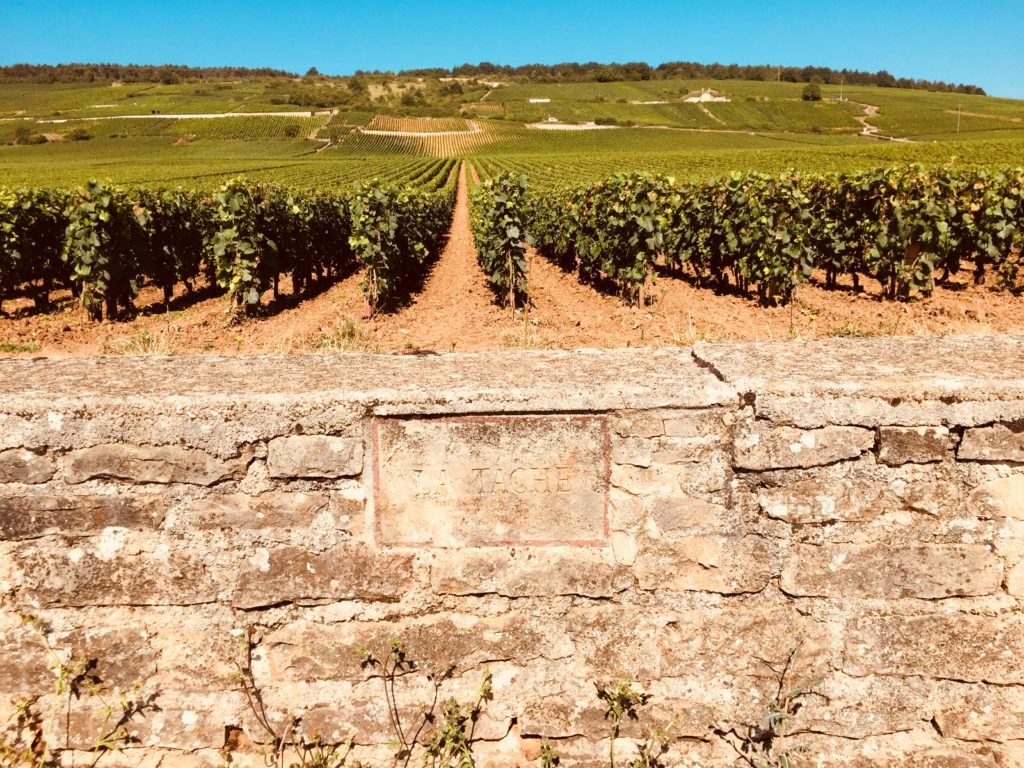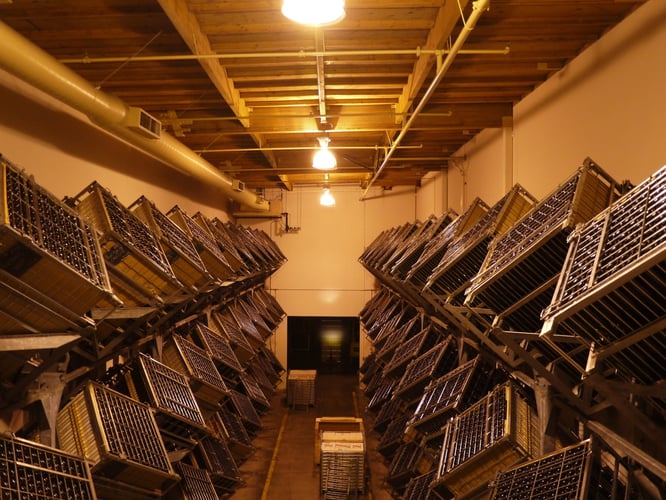With cheap wines fooling experts on a seemingly daily basis – much to the glee of journalists looking for their schadenfreude fix– you’d be forgiven for asking what the difference between expensive wine vs. cheap wine actually is, or wondering if there’s any difference at all.
What is it that drives the prices up on one bottle of wine, but keeps them low on another? Does price equal quality? We’ve taken a journey through the world of winemaking to give you an idea of the factors that determine a wine’s cost.
Location, location, location
Many of the factors driving up the price of a bottle are found out-of-doors and in the history books. Chief among these is the vineyard’s location – both the landscape it sits on and its appellation (the legally-defined region in which the grapes are grown).

For example, a hectare of vines inside the authorised growing area for Champagne can be worth a million euros. Outside, prices plummet to around €4,000. Famous vineyards like Domaine de La Romanée-Conti in Burgundy or Bollinger’s Clos St.-Jacques in Champagne are so recherché that wine produced there can command astronomical prices.

Even if the owner doesn’t have a huge cost of capital to recover, a vineyard lucky enough to have the ideal soil and climate for the grapes it’s growing will often charge more for the higher-quality fruit that goes into their wine.
Low yield vineyards
In order to maximise flavour, growers will often restrict the number of grape clusters in order to intensify the taste of those that do grow. Older vines naturally producer fewer grapes Fewer grapes means less wine, and if it turns out well for the winemaker, there won’t be enough to go around – therefore, bumping up the price! it’s basic supply and demand (with a little psychology, too.)
The really rare stuff – like 100-year-old champagnerecovered from the bottom of the sea – will go for astronomical prices. At that point, it’s more about collecting than quality.
Vintners producing cheaper wines can’t afford to restrict growth. In order to charge less, they have to get as many grapes as possible out of their vines, which in turn can result in less intense or complex flavours. This isn’t necessarily a bad thing, but it does mean that it often pays to drink cheaper wines when they’re young.
Adding sugar vs naturally occurring sweetness
In order to ramp up the flavour of affordable bottles, winemakers will use residual sugar – preventing all of the natural sugars in the grapes from being converted to alcohol in order to preserve some sweetness and intensity. You’ll rarely find this in more expensive wines that are made from concentrated, high-quality grapes.
Paying for heritage
Wines from certain areas are also able to charge more thanks to the heritage and history of their appellation. The higher up an appellation is in the hierarchy of its region, the more expensive the wine. Wines from the Rhône’s Hermitage AOC, for example, reach triple figures, while those from the broader Crozes-Hermitage AOC are often available for less than £20. There’s usually a correlation between the reputation and heritage of the place and the quality of the wine; but not always. On a more trivial level, this is the reason why producers put picturesque chateaux on their labels even if the wine was made in a factory next to a motorway.
Barrels and tanks
The material used during the fermentation and aging process is one of the biggest factors when it comes to determining the price of a wine.
The cost of traditional oak
Traditionally, a good chunk of the best-reviewed wines are aged in new oak barrels, thanks to the popularity of oaky flavours. When you consider the fact that one 80-year-old oak tree has enough wood for just two barrels, you get an idea of the astronomical costs that can mount up for the producer. Many of the world’s most expensive wineshave seen the inside of an oak barrel. A new French barrique can cost more than £700 and only holds around 300 bottles-worth of wine. That’s a significant cost per bottle to ferment or age wine in new barrels.
Cheaper alternatives to oak
However, oak doesn’t always mean a better wine. Cheaper, more consistent alternatives have arisen that pose a challenge to tradition. Steel fermentation tanks are extremely popular and make for fresh, energetic wines, but some argue that the results can be sterile and sharp thanks to a lack of oxygen exposure.
Concrete tanks sit somewhere in the middle – their walls are full of tiny holes that trap air and allow the wine to come into contact with oxygen, but they don’t add any flavour to the finished product like oak does. They’re something like the modern interpretation of the classical wine amphora. Both steel and concrete fermentation – and aging – vessels are significantly cheaper than oak barrels, and the finished wines are often more affordable than oak-fermented alternatives, too.
This isn’t a rule of thumb, though – Domaine de Chevalier, who produce wines that sit very comfortably in the ‘expensive’ category, recently bought ten concrete tanks.
Time and technique
Expensive wines will usually benefit more from aging than cheaper wines thanks to the complexity and intensity of their grapes. Storing and monitoring barrels of wine costs money, especially if the aging process runs into the decades. Wine Folly reckons that you can expect to pay around a pound extrafor every year a wine is aged in the barrel.
Hand vs. machine harvesting
Before anyone can even think about ageing, grapes need to be freed from their vines. There’s some debate about the impact of machine-harvesting versus hand-harvesting, but the basic argument says that machines are too rough and aren’t able to check for quality as well as human pickers. Jamie Kutch of Kutch Wines is in the machine-skeptic camp:
‘Broken or damaged fruit leads to oxidation, browning of aromatics and bacterial growth…Clippers enable a clean cut of the stem.’
While it may be better for the grapes, hand-clipping bunches from the vine is expensive – around three times as expensiveas using a mechanical harvester.
Whereas, some wineries don’t have a choice thanks to steep, difficult-to-navigate vineyards, some avoid machinery as part of an effort to produce organic or biodynamic wineand some take a blended approach and reserve hand-harvesting for their flagship wines. Whatever the reason, it usually means a more expensive finished product. With improvements to harvesting machinery, though, the impact on wine quality is hard to detect.
The tax man cometh
As you may have guessed, tax has a part to play in the pricing of a bottle of wine. If you’re in the UK, you can expect to pay a £2 duty per bottle on top of the 20 percent VAT. What does this mean for wine quality? Well, if you’re in the UK and purchasing a bottle that’s below £8, it’s likely that the price is almost entirely made up of profit margin, tax and bottle costs, with very little left over for the actual grapes and wine.
This doesn’t mean that you can’t find good wines at the sub £8 price-tag, but it does mean you’ll have to look harder for them, and there’s an argumentfor higher-priced wines actually being better value when it comes to the winemaking that goes into them.
Expensive wine vs. cheap, what’s the verdict?
There are plenty of fantastic wines to be had that won’t break the bank. In fact, a studyof 6,000 blind tastings from the Journal of Wine Economics found that there wasn’t that significant a relationship between high prices and wine ratings, and that most people actually enjoy really expensive wines slightly less.
We’ve referred to this quote from Jancis Robinson before, but it bears repeating when we’re thinking about how much wine costs:
‘Far too many wines are clearly priced by marketing people, or those keen to develop or protect a reputation, rather than by wine lovers.’
With Jancis’s caveat in mind, hopefully you’ve got a better idea of what goes into a bottle of wine, and what drives higher prices. Sometimes it’s quality, sometimes it’s rarity – it could be technique – and sometimes (just sometimes) it’s all of the above.



